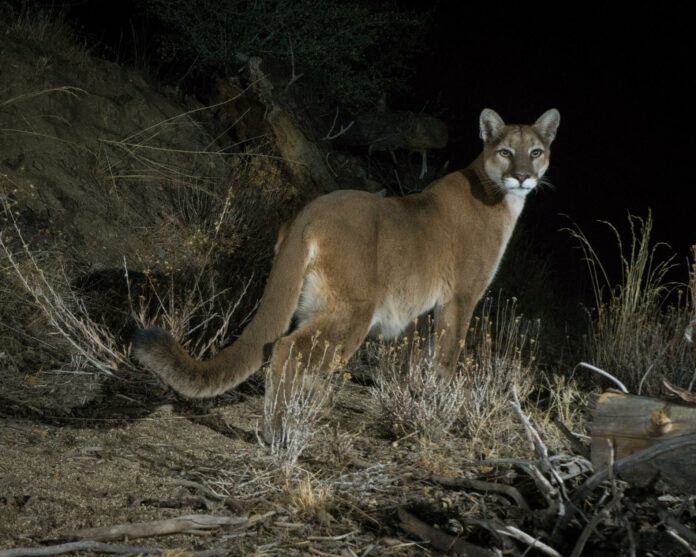Isolation and low genetic diversity threatens Southern California mountain lion populations
Although it is commonly accepted that mountain lions are dangerous, humans may be more of a threat to these predators than they are to us. A recent study of two mountain lion populations in the Santa Ana and Santa Monica Mountains revealed the potential extinction of these two populations over a period of 50 years.
According to Winston Vickers, a wildlife veterinarian at the Wildlife Health Center at UC Davis, the study had began by examining the impact of these mountain lions on endangered bighorn sheep in Southern California.
As the researchers began to accumulate data on the mountain lion populations, however, they began to discover aspects of this species that were previously unknown. In addition, John Benson, an assistant professor of vertebrate ecology at the University of Nebraska, stated that the team was concerned about the low genetic diversity and isolated nature of these populations, which motivated them to further study possibilities of extinction.
“Specifically, we wanted to contribute information to local conservation efforts and, more generally, to a greater understanding of the dynamics of small, isolated wildlife populations,” Benson said.
The two populations share various similarities, such as being small in size due to the factors of isolation and low genetic diversity, leading to the threat of local extinction. However, Benson explained that the Santa Monica Mountains popular showed a higher mortality rate and greater population abundance along with a greater risk for local extinction.
Vickers explained that a surprising find within their research was the discovery that the freeways, such as Interstate 15, and statewide development have created various genetic divisions throughout California.
“Mountain lions are highly mobile animals and one would expect them to have a pretty good chance to get across highways or find ways to cross,” Vickers said. “But it turns out these big freeways are more of a barrier, either because they get killed trying to cross or the crossing structures that are there are not adequate for them to use or there’s something about freeway environment that tends to turn them back.”
In order to mitigate this barrier and increase landscape connectivity, the number of safe pathways across Interstate 15 could be increased or existing passages could be improved upon. Benson added that this would also serve other wildlife populations with low genetic diversity.
The team is currently collaborating with engineering students and faculty at Cal Poly Pomona to design these new crossing structures. Vickers also proposed moving the mountain lion populations to the other side of the freeway, although the challenge is deciding which specific groups should be moved within the population concerning age and sex. However, he did explain that younger animals would be less likely to have previously established territories that they would migrate back to if moved, which would make them a good potential candidate.
The model they developed using demographic and genetic data on these populations illustrated an increase immigration to a greater effect in the Santa Monica Mountains population in terms of reducing the extinction. This proves to be an optimistic result, as it can have implications towards other populations as well.
“If we can conserve the largest cat species in the United States within our second largest metropolitan area, this bodes well for our ability to conserve large carnivores just about anywhere,” Benson said. “Large carnivores are notoriously difficult to conserve in human-dominated landscapes, so if we can do it in LA, this provides a compelling example that humans and carnivores can coexist.”
Peter Mahoney, a postdoctoral researcher at the School of Environmental and Forest Sciences at the University of Washington, said that finding a way to promote genetic diversity through population connectivity may allow populations of mountain lions to persist for years to come. Although mountain lions are highly sensitive to human activities as apex predators, he stated that there is a vigorous population documented that is isolated by one of the largest metropolitan areas in North America.
“There is still hope for many species currently threatened or endangered by human activities,” Mahoney said. “Many species, or populations in the case of the Santa Monica mountain lions, exhibit remarkable resilience to human disturbance provided certain basic needs are met.”
Moving forward, the team plans to continue studying the behavior, population dynamics and genetics of the mountain lion populations along with determining whether their low genetic diversity is causing increased mortality or reduced reproduction. Vickers explained that these mountain lion populations serve as representatives for less mobile populations, which may also be broken up due to human activity. He believes that more resources should be dedicated to helping these populations and that they should be put at a higher priority.
“I think drawing that lesson that we, humans in California that are rapidly developing states, have to be cognizant that we are alternating these habitats significantly and breaking them into islands of a sort and that that’s avoidable if we have proper planning and proper instruction to highway agencies to make sure that they develop crossing that are of adequate size and type for wildlife,” Vickers said.
Written by: Michelle Wong — science@theaggie.org




